Introduction to SEO-Optimized Website Design and Its Importance
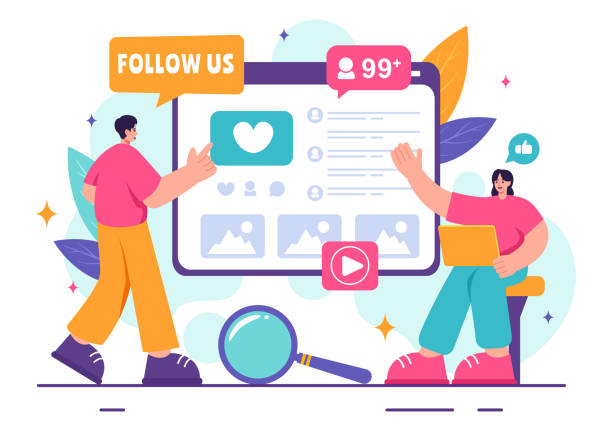
In today’s digital world, merely having a website is not enough; what truly matters is its visibility in search engines.
This is where the concept of #SEO_optimized_website_design and Search Engine Optimization (SEO) comes in.
SEO is a set of techniques and strategies that help your website achieve a higher ranking in the organic search results of Google, Bing, and other engines.
An SEO-optimized website not only attracts more visitors, but these visitors are often more targeted and have a higher probability of converting into customers.
Imagine you have a business, and your potential customers are searching for your services or products every day; if your website does not appear on the first pages of search results, you effectively lose countless opportunities.
The importance of SEO-optimized website design is such that it can be considered the backbone of modern digital marketing.
Without an SEO-centric infrastructure, even the best content and most beautiful web design might go unnoticed.
This process begins from the very initial stages of website design and development and continues after launch with continuous updates and data analysis.
The ultimate goal is to increase organic traffic, improve user experience, and ultimately, grow the business.
In this article, we will delve into all aspects of this topic in an #explanatory and #educational manner.
Did you know that a poor corporate website loses you many opportunities daily? Solve this problem forever with professional corporate website design by Rasawab!
✅ Create a powerful and reliable image for your brand
✅ Attract targeted new customers and increase sales
⚡ [Get Free Website Design Consultation]
Basic Principles of SEO in Web Design
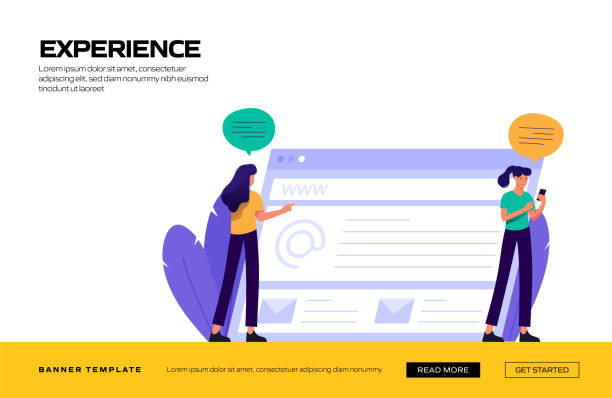
After understanding the importance of SEO, it is necessary to become familiar with the basic principles that make an SEO-optimized website design possible.
These principles are divided into two main categories: On-Page SEO and Technical SEO.
On-Page SEO refers to optimizing elements visible to users and search engines on website pages; such as proper use of keywords, creating attractive meta descriptions, optimizing heading tags (H1, H2, H3), and logical page URL structures.
Choosing appropriate keywords and using them naturally in content is one of the first and most important steps.
On the other hand, Technical SEO focuses on optimizing the website’s infrastructure so that search engines can easily crawl and index it.
This includes elements such as website loading speed, responsiveness (mobile compatibility), use of HTTPS protocol, internal and external link structure, and XML sitemap.
A website with an SEO-centric design should be built upon these principles from the very beginning.
Site speed directly impacts user experience and search engine ranking, and responsiveness is crucial given the increasing use of mobile for web browsing.
In fact, Google has prioritized the mobile version of websites.
By adhering to these #specialized principles, the path for your website to be seen in search results becomes smoother, and you will be recognized as a website with SEO-optimized website design.
The Role of User Experience (UX) in SEO and its Factors Table

Perhaps in the past, it was thought that SEO was limited to keywords and links, but today we know that User Experience (UX) is one of the most important ranking factors.
An SEO-optimized website design goes beyond technical optimization to also address a delightful user experience.
Search engines, especially Google, have developed their algorithms such that websites offering a better user experience achieve higher rankings in search results.
Metrics like Core Web Vitals (including LCP, FID, and CLS which relate to loading speed, interactivity, and visual stability), Bounce Rate, and Dwell Time, all indicate the quality of the user experience.
If a user quickly leaves your site (high bounce rate) or spends little time on it, Google considers this a sign of user dissatisfaction and it can negatively impact your SEO ranking.
Therefore, in SEO-optimized website design, these points should be considered from the very beginning.
A website that is easy to navigate, has clear and accessible content, and features an attractive visual design encourages users to spend more time on it and interact with it.
This UX improvement indirectly leads to better SEO and increases your site’s credibility with search engines.
This is an analytical approach that shows SEO is no longer just about keywords, but about the entire user experience.
| UX Factor | Explanation and SEO Impact |
|---|---|
| Page Load Speed | Reduces bounce rate, improves Core Web Vitals and user satisfaction. Search engines prefer fast websites. |
| Responsiveness (Mobile-Friendliness) | Today, most searches are performed via mobile. Mobile compatibility is crucial for ranking. |
| Easy Navigation | Users and search engine crawlers should be able to navigate the site easily. Improves indexability and dwell time. |
| Content Readability | Use of short paragraphs, headings, lists, and appropriate font to increase user interaction with content. |
| Attractive Visual Design | Prevents quick user exits, increases trust, and creates a positive user experience. |
SEO-Optimized Content Beyond Keywords

As previously mentioned, SEO-optimized website design is not limited to technical issues; content plays a pivotal role in it.
Today, search engines go beyond mere keyword matching, prioritizing the quality, depth, and relevance of content to user intent.
Producing SEO-optimized content means creating texts and media that are not only optimized for search engines but are also valuable, informative, and engaging for users.
This includes fully answering user questions, providing accurate and reliable information, and comprehensive topic coverage.
The E-A-T concept (Expertise, Authoritativeness, Trustworthiness), introduced by Google, emphasizes the expertise, authoritativeness, and trustworthiness of content and websites.
This means your content should be written by experts, have credible sources, and provide accurate information.
Using long-form content that addresses all aspects of a topic can help increase your website’s credibility.
In addition to text, optimizing images and videos is also vital for content SEO.
Using appropriate Alt tags for images and detailed descriptions for videos helps search engines understand your visual content and display it in search results.
Ultimately, your content strategy should be seamlessly integrated with your SEO-optimized website design to maximize effectiveness and convert visitors into loyal customers.
This is a specialized guide for producing content that is both useful for the user and understandable for the search engine.
Tired of your company’s website not being seen as it deserves, losing potential customers? Solve this problem forever with professional and effective website design by Rasawab!
✅ Increase brand credibility and earn customer trust
✅ Attract targeted sales leads
⚡ Contact us now for a free consultation!
Technical Aspects of SEO-Optimized Website Design
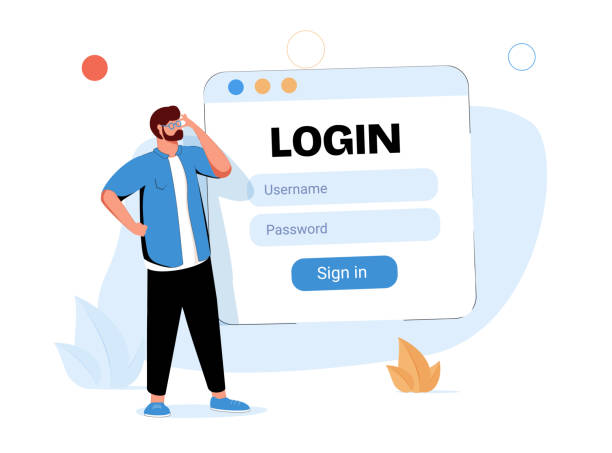
After examining the importance of UX and content, it’s now time for the deeper and more technical aspects of SEO-optimized website design.
These elements form the backbone upon which search engines can correctly crawl and index your website.
Without these strong technical foundations, even the best content might not be seen in search results.
Crawlability and indexability refer to the ability of search engines to access your website’s pages and store them in their database.
Factors such as the robots.txt file (which tells search engines which pages not to crawl) and XML sitemap (Sitemap XML) (which provides a list of all important site pages to search engines) are vital in this regard.
Additionally, using structured data (Schema Markup) helps search engines better understand your page content and display it in a richer way in search results, for instance, as star ratings or contact information.
Converting the website to HTTPS protocol not only enhances user security but is also recognized as a ranking factor by Google.
Clean and optimized coding, with few errors and adherence to web standards, improves site speed and makes the work of crawlers easier.
Furthermore, managing redirects and Canonical tags to prevent duplicate content issues are other important technical aspects of an SEO-centric design.
These #technical aspects are essential for any website seeking success in search engines.
Modern Tools and Techniques in Website Optimization

On the path of SEO-optimized website design and its continuous optimization, familiarity with and use of appropriate tools is crucial.
These tools allow you to monitor your website’s performance, identify problems, and discover new opportunities for ranking improvement.
Google Search Console is one of Google’s most important free tools, providing vital information about your site’s search performance, crawling and indexing issues, and backlink status.
Google Analytics is also an unparalleled tool for analyzing user behavior on the site, traffic sources, and conversion rates.
For keyword research, tools like Ahrefs, Semrush, Google Keyword Planner, and KWFinder provide significant help.
These tools not only identify high-volume keywords but also show the competition level and search trends.
Using modern techniques such as optimizing for Voice Search SEO, which has become more important with changes in how users search, as well as paying attention to Google’s AI algorithms like RankBrain and BERT, can create a competitive advantage.
Continuous monitoring of competitors and analyzing their SEO strategies is also a #specialized and highly effective technique, made possible with competitor analysis tools.
All these tools and techniques together provide a comprehensive and educational approach to success in SEO-optimized website design, allowing you to make more open-minded and data-driven decisions.
Case Study of Successes in SEO-Optimized Website Design and Comparative Table
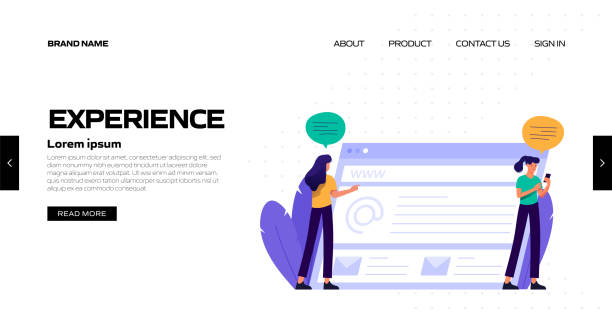
To better understand the effectiveness of SEO-optimized website design, a look at some real successes can be inspiring.
Many large and small businesses, by investing in SEO, have witnessed significant growth in organic traffic, increased sales, and improved brand awareness.
For example, an online clothing store, after redesigning its website with a focus on loading speed, responsiveness, and an SEO-friendly URL structure, as well as producing rich content for products, managed to increase its organic traffic by over 200% and its conversion rate by 1.5 times within 6 months.
This is a #news and real example of the power of SEO. Or a service company that, by optimizing its website content for local keywords and creating specialized landing pages for each service, managed to achieve the top rank in local searches and double its incoming calls.
These successes show that SEO-optimized website design is a long-term investment that yields sustainable results.
The difference between a regular website and a website with an SEO-centric design lies in its ability to continuously attract potential customers through organic searches.
Below, we provide a comparative table of the features of a successful SEO-optimized site versus an unsuccessful one to better understand the differences.
These analyses demonstrate how significantly adhering to SEO principles can impact the success of an online business.
| Feature | Successful Website (SEO-Optimized) | Unsuccessful Website |
|---|---|---|
| Load Speed | Very fast (under 2 seconds) | Very slow (over 5 seconds) |
| Mobile Compatibility | Fully responsive and user-friendly | Incompatible or poor mobile design |
| Content Quality | Deep, high-quality, and valuable content | Duplicate, low-quality, and worthless content |
| Website Structure | Logical structure, easy navigation, SEO-friendly URLs | Complex structure, difficult navigation, unclear URLs |
| Security Protocol | Active and valid HTTPS | HTTP or invalid SSL certificate |
| User Experience (UX) | Attractive design, high interaction, low bounce rate | Outdated design, no interaction, high bounce rate |
Challenges and Future of SEO-Optimized Website Design
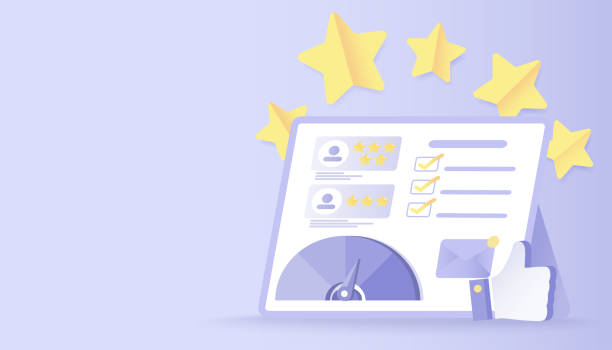
Despite all the advantages of SEO-optimized website design, this field is not without challenges and is constantly evolving.
The most significant challenge is the frequent updates to Google’s algorithms.
These updates can change the rules of the game and quickly demote websites that react slowly to changes from high rankings.
Therefore, a website with SEO-optimized website design must possess high flexibility and be continuously monitored and optimized.
Another challenge is increasing competition; with growing awareness of SEO’s importance, more businesses are investing in this area, leading to intense competition for popular keywords.
In the future, we will witness deeper changes in SEO.
Voice search and the use of artificial intelligence in search engines will transform how users interact with search results.
This means content must increasingly answer direct questions and natural conversations, not just single keywords.
Also, the importance of personalized user experience and visual content (such as videos and 3D images) will increase.
SEO-optimized website design in the future will require a more comprehensive and proactive approach that considers not only current algorithms but also future trends and changing user behaviors.
This topic is a thought-provoking and analytical content that makes us ponder the future of SEO.
Does your current website convert visitors into customers or drive them away? Solve this problem forever with professional corporate website design by Rasawab!
✅ Build strong credibility and branding
✅ Attract target customers and increase sales
⚡ Get a free consultation now!
Common Mistakes in Website Design and SEO, and Their Solutions
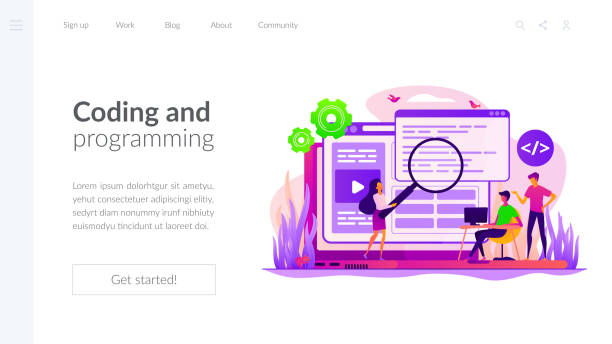
On the path of SEO-optimized website design, there are common mistakes that can render your efforts fruitless and harm your website’s ranking.
Understanding these mistakes and knowing their solutions is essential for anyone aiming to have a successful website.
One of the most common mistakes is insufficient keyword research.
Choosing incorrect or overly competitive keywords can lead to your website never being seen.
The solution is to dedicate enough time to in-depth keyword research and focus on Long-Tail Keywords, which have less competition but clearer user intent.
Another mistake is neglecting site loading speed and responsiveness.
Many websites still offer a poor user experience due to slow speeds and lack of mobile compatibility, which directly negatively impacts SEO.
The solution is to optimize images, use caching, and choose a reputable host.
Also, producing low-quality or duplicate content (Keyword Stuffing) instead of valuable content can be penalized by Google.
Always focus on producing original, useful, and comprehensive content.
Technical mistakes such as missing sitemap, incorrect robots.txt file, or broken links should also be identified and fixed.
This is a fun guide that helps you avoid common challenges and move towards SEO-optimized website design.
Fixing these mistakes can save your website from obscurity and put it on the path to success.
Conclusion and Next Steps for Your SEO-Optimized Website Design

Throughout this article, we discussed various dimensions of SEO-optimized website design.
From its fundamental importance for online visibility to the basic principles of on-page and technical SEO, the vital role of user experience, the importance of valuable content, and the modern tools and techniques in this field.
Furthermore, by examining case studies of successes and future SEO challenges, a more comprehensive perspective was offered.
It became clear that a website with an SEO-centric design is not merely a one-time project but a continuous and strategic process requiring constant attention, data analysis, and regular updates.
For the next steps towards having a successful SEO-optimized website design, first evaluate your current website with tools like Google Search Console and PageSpeed Insights to identify problems and opportunities.
Then, develop a comprehensive keyword strategy for your business.
Focus on producing high-quality, valuable content that answers user questions and increases your credibility.
Ensure that your website’s technical aspects (speed, responsiveness, URL structure) are optimized.
Perform internal and external link building correctly.
And finally, always monitor your site’s performance and make data-driven decisions.
Investing in SEO-optimized website design is an investment in the future of your business in the digital world.
This is an explanatory guide to start your SEO journey.
Frequently Asked Questions
| Row | Question | Answer |
|---|---|---|
| 1 | What is an SEO-optimized website? | It is a website designed and developed following Search Engine Optimization (SEO) principles to achieve a higher ranking in search results. |
| 2 | Why is having an SEO-optimized website important? | It increases visibility, attracts organic traffic, boosts conversions, and builds brand credibility, all contributing to business growth. |
| 3 | What are the key elements of SEO-optimized website design? | Technical SEO (speed, mobile compatibility), On-Page SEO (keywords, content), User Experience (UX), and website security (HTTPS). |
| 4 | How does website speed affect SEO? | Faster sites improve user experience, reduce bounce rates, and are preferred by search engines, leading to better rankings. |
| 5 | Is mobile compatibility important for SEO? | Absolutely. Google uses mobile-first indexing, so responsive mobile design is crucial for ranking. |
| 6 | What role does content play in SEO-optimized website design? | High-quality, relevant, and keyword-optimized content is essential for attracting users and signaling relevance to search engines. |
| 7 | What is keyword research and why is it important? | Finding popular search phrases people use. This process helps align content with user intent and attracts relevant traffic. |
| 8 | How is User Experience (UX) related to SEO? | Good UX (easy navigation, readability) keeps users on the site longer, reduces bounce rates, and sends positive signals to search engines. |
| 9 | What is a Sitemap and how does it help SEO? | It is a file that lists all pages of a site. It helps search engines crawl and index your site more effectively. |
| 10 | Should I use HTTPS for my website? | Yes, HTTPS provides security and is considered a small ranking factor. It also increases user trust. |
And other services of Rasa Web Advertising Agency in the field of advertising
Smart Customer Journey Map: An effective tool to increase click-through rate with marketing automation.
Smart Brand Identity: An effective tool for user engagement through intelligent data analysis.
Smart Link Building: A specialized service for growing customer acquisition based on key page optimization.
Smart Link Building: An effective tool for campaign management with an SEO-centric content strategy.
Smart Digital Advertising: Designed for businesses seeking online growth through attractive user interface design.
And over hundreds of other services in the field of online advertising, advertising consultation, and organizational solutions
Online Advertising | Advertising Strategy | Advertorial
Sources
- SEO-Optimized Website Design – Iran Top
- SEO-Optimized Website Design – Kian SEO
- What is SEO-Optimized Website Design? – Hamrah Code
- The Importance of SEO in Website Design – SEO Rooz
? For a powerful presence in the digital world, Rasawab Afarin accompanies your business by offering the best digital marketing services, including corporate website design.
📍 Tehran, Mirdamad Street, next to Central Bank, Southern Kazerun Alley, Ramin Alley, No. 6



